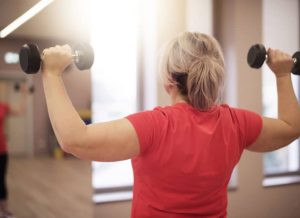Back to Patient Portal
It’s that time again when the new year’s resolutions have come and gone, and people are slowly slipping back into their old routines. One of your goals this year might have been to exercise more, but maybe you are finding this difficult to stick to and are now questioning how much exercise you really should be doing to stay healthy.
The Australian Government’s Department of Health has done a lot of the hard work for us and has put together the following Physical Activity Guidelines for Adults.
Physical Activity Guidelines for Adults (18-64 Years)
- Doing any physical activity is better than doing none. If you currently do no physical activity, start by doing some, and gradually build up to the recommended amount.
- Be active on most, preferably all, days every week.
- Accumulate 150 to 300 minutes (2 ½ to 5 hours) of moderate intensity physical activity or 75 to 150 minutes (1 ¼ to 2 ½ hours) of vigorous intensity physical activity, or an equivalent combination of both moderate and vigorous activities, each week.
- Do muscle strengthening activities on at least 2 days each week.
But what does that actually mean?
We have put together a little guide below to help you guys out: If you find it hard, the best thing to do is aim for the minimum amount but aim to build this into your weekly routine so you do it week-in and week-out regardless of the time of year. Once the minimum amount become second nature you can build up to more exercise, but make sure that if you fall back, it’s to the required minimum amount rather than to nothing.

Brisk walking is an option
Moderate Intensity Activities
This is exercise that does require physical effort on your part and can leave you a little sweaty, but you can still hold a conversation during these activities. Examples of these may be:
- Brisk walking
- Swimming
- Dancing
- Cycling at moderate speeds

Cycling up hill or at a fast pace is an option
Vigorous Intensity Activities
This is exercise that requires more physical effort and is more intense than the above moderate intensity examples. These sorts of activities will often leave you panting and short of breath afterwards, and you will likely work up a sweat! Examples of these may be:
- Jogging or running
- Cycling fast and/or at a steep incline
- Competitive sports
- High Intensity Interval Training (HIIT)

Light weight lifting is an option.
Muscle Strengthening Exercise
This doesn’t have to be going to the gym and lifting weights. Although weight lifting is one way to strengthen muscles there are other options such as resistance training (causing the muscles to contract against external resistance), bodyweight training (such as press-ups or squats), or even yoga/pilates.
Tips to help you meet the minimum!
So you might be sighing thinking you already know all of the above, you’ve tried and you’re still struggling to either understand or actually change your lifestyle to accommodate. So we thought we’d put together some tips for you.
1. Make walking count
Walking is a ‘moderate intensity’ activity and you can find ways to add this everyday task to your exercise for the week. Try walking at a faster pace than you normally would (aim for 100 steps per minute if you can). A pedometer and most smartphones can track your steps. 10,000 steps (about 8km) is a goal that many talk of but not all of us have the time for nearly 100 minutes of walking a day. 1/3 of this can be done by most of us with a bit of organisation. Jump off the bus/train a stop earlier on the way to work to increase the distance you are walking, or better yet use your feet as your transportation whenever possible. If walking to work isn’t an option, is it time to consider cycling to work? (cycling is another great form of either moderate or vigorous exercise, depending on how much you challenge yourself!).
2. Every other day is better than no days
Even though it is recommended that we exercise in some way every day, this isn’t always possible. If you don’t have the time, or want to make time, to exercise every day, then how about having a few days a week where you include vigorous exercise? That way on your more sedentary days you can still make the most of brisk walking and general movement but are hitting your weekly target on your high intensity days.
3. Move more
Depending on your daily routine, unfortunately many of us are finding that we are sitting down more than we would like. So a simple change is to try to move more… stand up and walk around when you’re speaking on your mobile phone… take fifteen minutes from your lunch break and use it to have a walk around instead of staring into your phone… wash your car yourself rather than sitting in it going through a car wash… choose to stand up on the bus rather than sit down (believe it or not we burn more calories standing than we do sitting).
At the end of the day the amount we exercise can have a big impact on our overall health, which is why it is important to take it seriously. If you are consciously making the effort every day (or every other day…) to incorporate more exercise into your routine and consistently increase this until you are meeting the guidelines, then you can expect your health to improve accordingly.


0 Comments